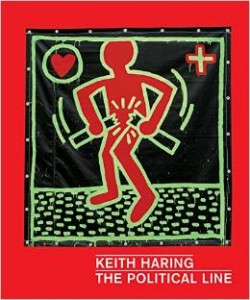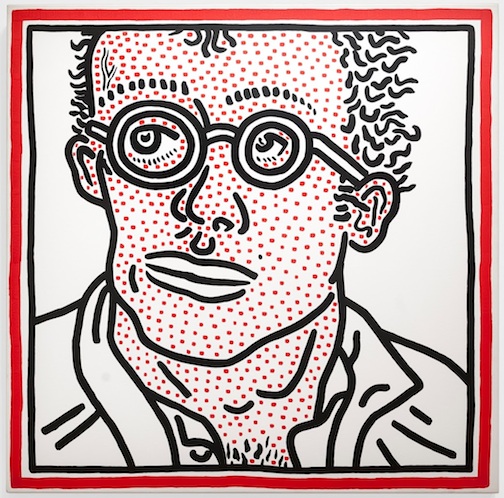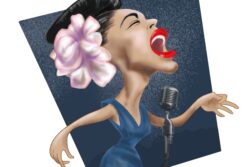Keith Haring: The Political Line
The de Young Museum at the Fine Arts Museum of San Francisco
Nov. 8, 2014 to Feb. 16, 2015
 Keith Haring: The Political Line
Keith Haring: The Political Line
by Dieter Buchhart, et al.
Prestel. 272 pages, $65.
IN 1980, graffiti-inspired chalk drawings proliferated throughout New York’s subway system. Keith Haring’s whimsical, cartoonish iconography was everywhere. Zapping spaceships, pulsing TVs, barking dogs, crawling babies, flying angels, leaping porpoises, and smiling faces abounded.
Haring’s “tagging” was soon legitimized by the art world; his first gallery show was in 1982. One year later he was featured in biennial shows at the Whitney Museum and at the Ciccillo Matarazzo Pavillion in São Paulo. Before long he was collaborating with Andy Warhol, Madonna, Grace Jones, Jenny Holzer, and Bill T. Jones in galleries, museums, theaters, outdoor spaces, and dance clubs. Next, his artistic œuvre expanded to include ink drawings, woodcut prints, paintings on tarpaulins and wood, aluminum sculptures, sets and costumes, and large-scale outdoor murals in New York, Tokyo, San Francisco, Paris, and Melbourne, and on the Berlin Wall. By 1986, his very own Pop Shop in Soho sold branded merchandise, including pins, T-shirts, calendars, watches, magnets, and prints.







